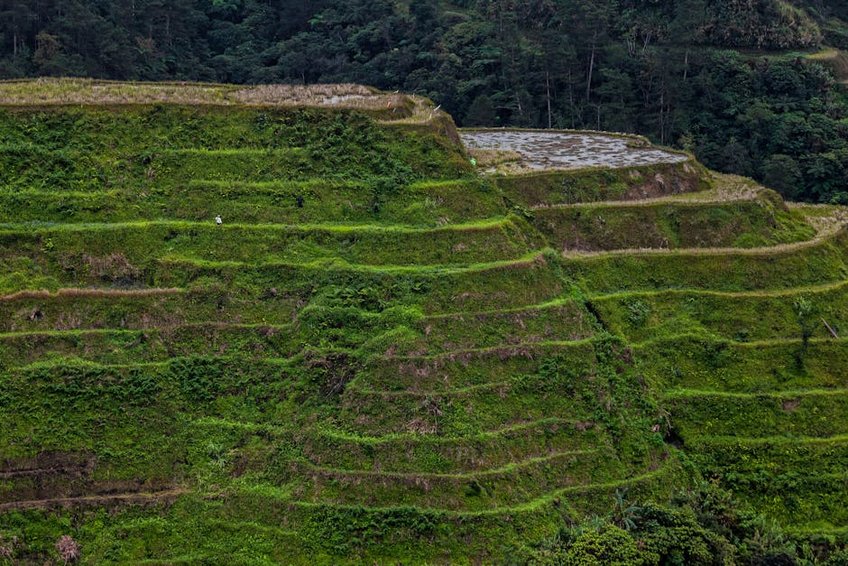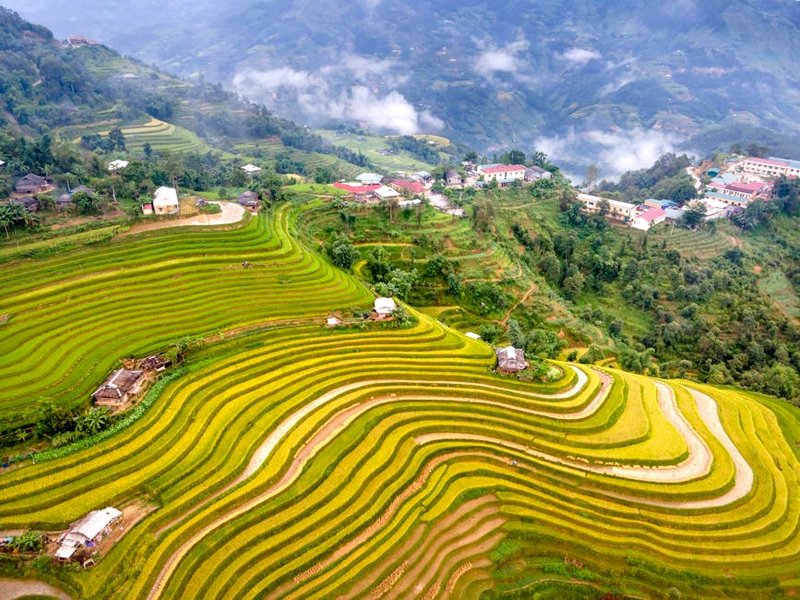Philippines Banaue Rice Terraces: Your Ultimate Travel Guide
Imagine standing on the edge of a misty mountain, gazing at emerald-green steps carved into the slopes over 2,000 years ago—this is the breathtaking reality of the Philippines Banaue Rice Terraces. Often called the “Eighth Wonder of the World,” these ancient terraces in the Cordillera Mountains represent an incredible feat of engineering and cultural heritage, built by the Ifugao people without modern tools. You’ll feel a deep sense of awe as you explore this UNESCO World Heritage site, where every layer tells a story of tradition, community, and harmony with nature. Whether you’re an adventure seeker, a culture enthusiast, or someone craving tranquility, the Philippines Banaue Rice Terraces offer an unforgettable journey into the heart of the Philippines. From the cool mountain air to the warm hospitality of the locals, this destination promises a unique blend of natural beauty and rich history that will leave you inspired. Pack your sense of wonder and get ready to discover one of Southeast Asia’s most iconic landscapes, where the past and present merge in a stunning display of human ingenuity.
Philippines Banaue Rice Terraces – Essential Information
Before you embark on your adventure to the Philippines Banaue Rice Terraces, it’s crucial to understand their historical and cultural significance. These terraces, spanning over 10,000 square kilometers, were hand-carved by the Ifugao indigenous people around 2,000 years ago, primarily for rice cultivation. They’re not just agricultural marvels but a living cultural landscape that reflects the Ifugao’s spiritual beliefs and sustainable farming practices. As a UNESCO World Heritage site since 1995, they face challenges like erosion and modernization, but conservation efforts aim to preserve this heritage for future generations. You’ll appreciate how the terraces blend seamlessly with the environment, showcasing a deep respect for nature that’s rare in today’s world. Learning about this background will enrich your visit, making it more than just a scenic stop but a meaningful cultural immersion.
What Are the Banaue Rice Terraces? – A Historical Overview
- The terraces were constructed using stone and mud walls, with an intricate irrigation system that channels water from the rainforests, demonstrating advanced ancient engineering skills.
- They are often referred to as the “Stairway to Heaven” due to their steep, ladder-like appearance, and they symbolize the Ifugao people’s resilience and connection to their ancestors.
- Today, many terraces are still actively farmed, with rice planting seasons (typically June-July and December-January) offering a vibrant green landscape that changes with the harvest cycles.
- Budget travelers can expect to spend around $30-50 USD per day, covering basic accommodation in homestays ($10-20/night), local meals ($5-10/day), and public transportation like buses from Manila ($15-20 one-way).
- Mid-range options cost $70-120 USD daily, including comfortable guesthouses or eco-lodges ($30-60/night), guided tours ($20-40), and meals at restaurants serving local and international cuisine ($15-25/day).
- Luxury experiences range from $150-300 USD per day, featuring upscale resorts with mountain views ($80-150/night), private guides and transportation ($50-100), and fine dining with organic produce ($30-50/day).
- Official Philippines Tourism Authority on Banaue Rice Terraces
- UNESCO World Heritage Listing for Banaue Rice Terraces
UNESCO World Heritage Status and Its Importance
Being designated a UNESCO World Heritage site in 1995 highlights the global significance of the Philippines Banaue Rice Terraces, recognizing them as a masterpiece of human creative genius. This status helps protect the terraces from threats like climate change and unsustainable tourism, while also promoting cultural preservation. As a traveler, you contribute to this effort by visiting responsibly—sticking to marked paths, supporting local guides, and learning about Ifugao traditions. The UNESCO label ensures that the terraces remain a testament to sustainable living, inspiring similar practices worldwide. It’s a reminder that these aren’t just pretty views but a vital part of humanity’s shared heritage, worth protecting for generations to come.
Philippines Banaue Rice Terraces – Planning Your Trip
Planning your trip to the Philippines Banaue Rice Terraces involves considering the best seasons, budgeting wisely, and preparing for the unique mountain environment. The dry season from November to April is ideal, as trails are accessible and skies are clear, but the rainy season (May-October) offers lush greenery and fewer crowds. You’ll need to account for transportation from Manila, which can take 8-10 hours by bus or a shorter flight to nearby airports, followed by a scenic drive. Budget-wise, this destination caters to all ranges, from backpackers to luxury travelers, with options for homestays, guesthouses, or eco-lodges. Don’t forget to pack layers for cool evenings, sturdy hiking shoes, and a reusable water bottle to stay hydrated. By planning ahead, you’ll maximize your experience and avoid common pitfalls like overpacking or missing key cultural events.
Best Time to Visit Banaue Rice Terraces
The optimal time to visit the Philippines Banaue Rice Terraces is during the dry season from November to April, when rainfall is minimal, and temperatures range from 15°C to 25°C (59°F to 77°F). This period offers clear views for photography and comfortable hiking conditions. However, if you prefer a quieter experience with vibrant green terraces, the early rainy season in May or June can be rewarding, though trails may be muddy. Avoid peak holiday times like Christmas or Holy Week, when domestic tourism surges, leading to crowded viewpoints. Ultimately, your choice depends on whether you prioritize weather reliability or immersive, lush landscapes—either way, you’ll witness the terraces’ ever-changing beauty.
Budget Planning and Costs
Essential Preparation Checklist
To ensure a smooth trip, start by checking visa requirements—US and EU passport holders can enter the Philippines visa-free for up to 30 days. Pack lightweight, moisture-wicking clothing for daytime hikes and warmer layers for cool nights, along with rain gear if visiting during wet months. Essential items include sturdy hiking boots, a hat, sunscreen, insect repellent, and a first-aid kit. Book accommodations and tours in advance, especially in peak season, and carry cash (Philippine pesos) as ATMs are limited in rural areas. Lastly, learn a few basic phrases in Tagalog or the local Ifugao language to connect with communities; this preparation will help you navigate the terrain and culture with confidence.

Philippines Banaue Rice Terraces – Top Attractions and Activities
Your visit to the Philippines Banaue Rice Terraces is packed with incredible attractions and activities that cater to all interests, from hiking and photography to cultural immersion. Start at the Banaue Viewpoint for panoramic vistas, then explore nearby villages like Batad and Bangaan, where terraces are particularly well-preserved. You can embark on guided treks through rice paddies, visit traditional Ifugao huts, and even participate in rice planting or harvesting during seasonal festivals. For adventure seekers, longer hikes to remote areas offer solitude and stunning views, while cultural performances and handicraft workshops provide insight into local life. Don’t miss the chance to witness sunrise or sunset over the terraces—the play of light on the green steps is a photographer’s dream. With so much to do, you’ll leave with memories that blend physical activity, learning, and pure relaxation.
Must-See Highlights
Among the must-see highlights, the Batad Rice Terraces stand out for their amphitheater-like formation, accessible via a moderate hike that rewards you with breathtaking views. Another key spot is the Banaue Museum, which showcases Ifugao artifacts and history, giving context to the terraces’ creation. For a unique perspective, take a guided walk to the Tappiya Falls, a refreshing waterfall nestled near Batad, perfect for a cool dip after trekking. These highlights not only offer visual splendor but also deepen your appreciation for the area’s cultural depth, making your trip more than just a sightseeing tour.
Hidden Gems and Local Favorites
Venture off the beaten path to discover hidden gems like the Hapao Rice Terraces, less crowded than Batad and known for their serene beauty and hot springs. Local favorites include attending a community-led workshop on traditional weaving or woodcarving, where you can create souvenirs while supporting artisans. For a peaceful retreat, visit the village of Mayoyao, where terraces are interspersed with ancient burial grounds and stone markers. These spots offer a more intimate experience, allowing you to connect with the land and people in a way that mass tourism often misses.
Philippines Banaue Rice Terraces – Practical Travel Information
Navigating the practical aspects of your trip to the Philippines Banaue Rice Terraces ensures a hassle-free adventure, from transportation to accommodation. Most travelers fly into Manila’s Ninoy Aquino International Airport, then take an 8-10 hour bus ride to Banaue, with companies like Coda Lines offering comfortable options for around $15-20 USD. Once there, local jeepneys and tricycles are affordable ways to reach viewpoints and villages, but hiring a guide is recommended for tricky trails. Accommodation ranges from budget homestays to mid-range lodges, with many offering authentic experiences like home-cooked meals. Be prepared for basic amenities in remote areas, and always confirm bookings in advance during peak seasons. This practical knowledge will help you focus on enjoying the scenery rather than worrying about logistics.
| Category | Options/Features | Price Range (USD) |
|---|---|---|
| Accommodation | Homestays, guesthouses, eco-lodges with mountain views | $10-150 per night |
| Transportation | Buses from Manila, local jeepneys, guided tours | $15-100 depending on type |
| Activities | Hiking tours, cultural workshops, photography sessions | $10-50 per activity |


